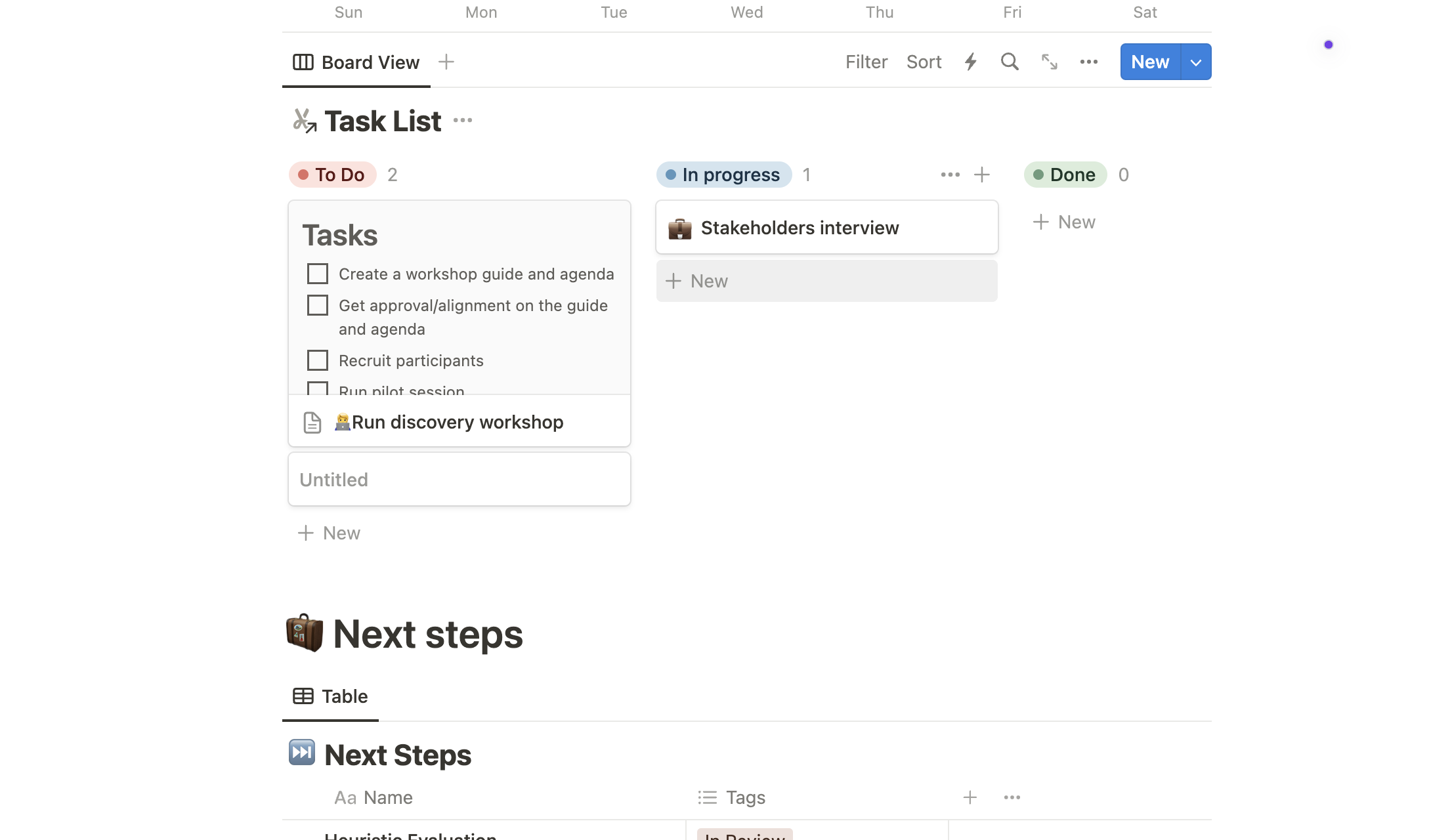
Introduction:
In the dynamic world of User Experience Research, effective management of data and insights is essential for informed decision-making and iterative design processes. Notion, a widely acclaimed productivity and note-taking web application, presented an opportunity to revolutionize the way UX research is organized and accessed. This case study delves into the strategic implementation of Notion as a UX Research repository, aiming to provide a comprehensive understanding of the methodology, setup, and transformative outcomes.
Objective:
The ultimate goal of this case study transcends the technicalities of setting up a tool; it encapsulates a vision to create a space where UX research thrives—an ecosystem that not only houses data but nurtures collaboration, knowledge preservation, and project efficiency. The objective is to showcase the metamorphosis of a conventional UX research repository into a powerhouse of innovation and efficiency.
Notion, a widely embraced web application for productivity and note-taking, has gained popularity among UX professionals and product managers globally. Personally, I employ Notion as a repository for my UX Research freelance projects. This article aims to demonstrate my approach and the setup I've implemented in Notion and to share my experiences. By the end of this read, you'll be equipped to utilize Notion as your own UX Research repository.
Assuming you're already familiar with Notion and have an account, let's delve into creating an effective UX Research repository. This centralized database is where teams can store, manage, and access data and insights from UX research projects. The benefits include enhanced accessibility, usability, knowledge preservation, efficiency, comprehensive data storage, and valuable insights for future projects.
Crafting the taxonomy for your UX Research repository involves collaborating with users, defining common terminology, establishing a logical hierarchical structure, and implementing a tagging or labeling system. This ensures that your repository is user-friendly and tailored to the specific needs of your team.
The UX Research repository in Notion serves as a centralized hub where teams can efficiently store, manage, and retrieve data and insights from various UX research projects.
The advantages of having a UX research repository are multifaceted:
Accessibility: This ensures that information is readily available to you, your team, and stakeholders involved in the projects.
Usability: Organizing research data enhances usability, facilitating the utilization of insights across multiple projects.
Knowledge Preservation: The repository acts as a vault, storing and preserving knowledge, allowing past insights to be leveraged for present and future projects.
Efficiency: A well-organized repository saves time and resources by preventing the duplication of data and insights.
Data Storage: The repository accommodates various UX research methods, including user interviews, videos, transcripts, analyses, usability tests, analytics, survey data, and more.
Insights: Storing all insights contributes to building a substantial database of information about users and products, which can be valuable for future projects.

